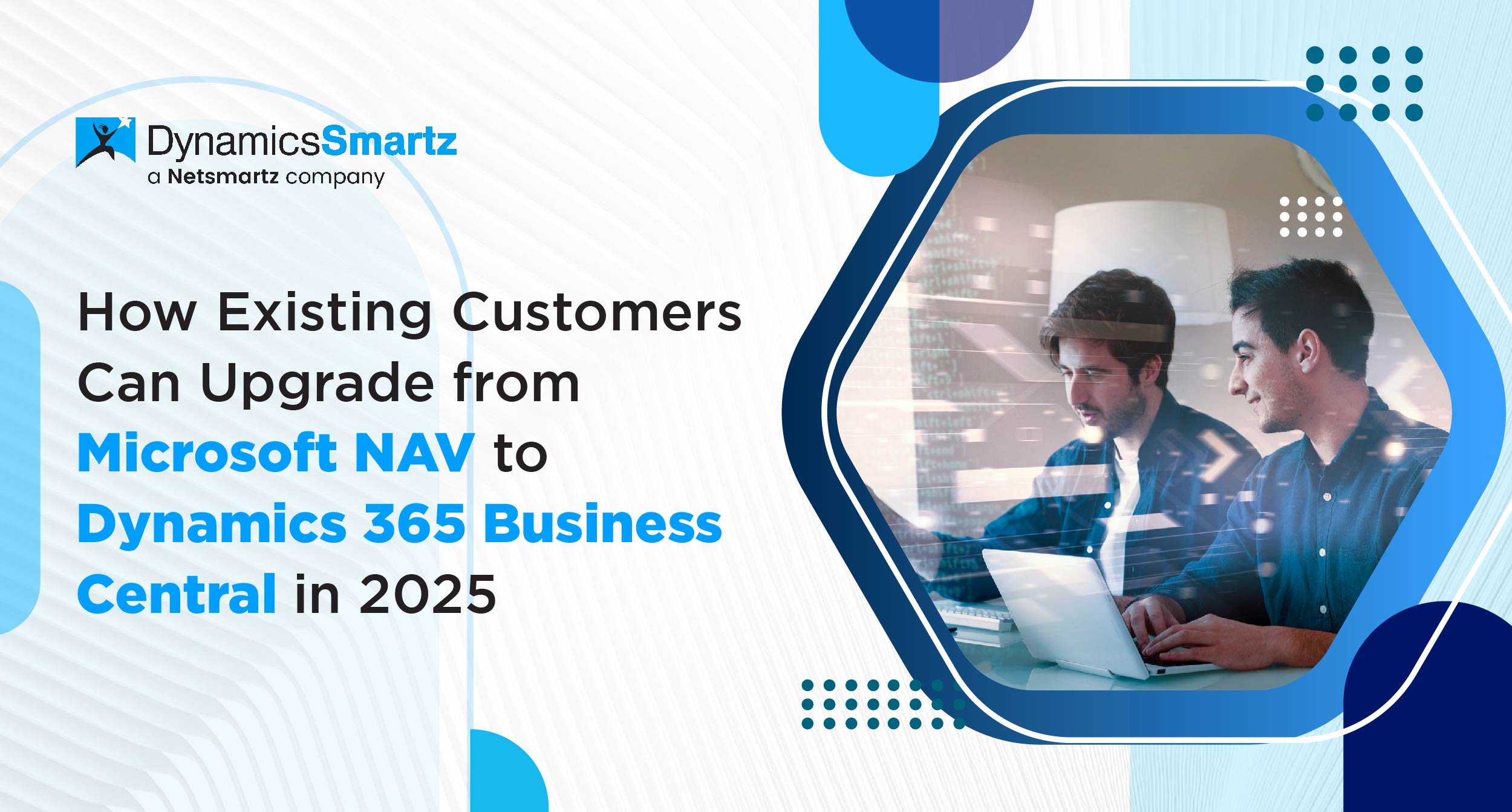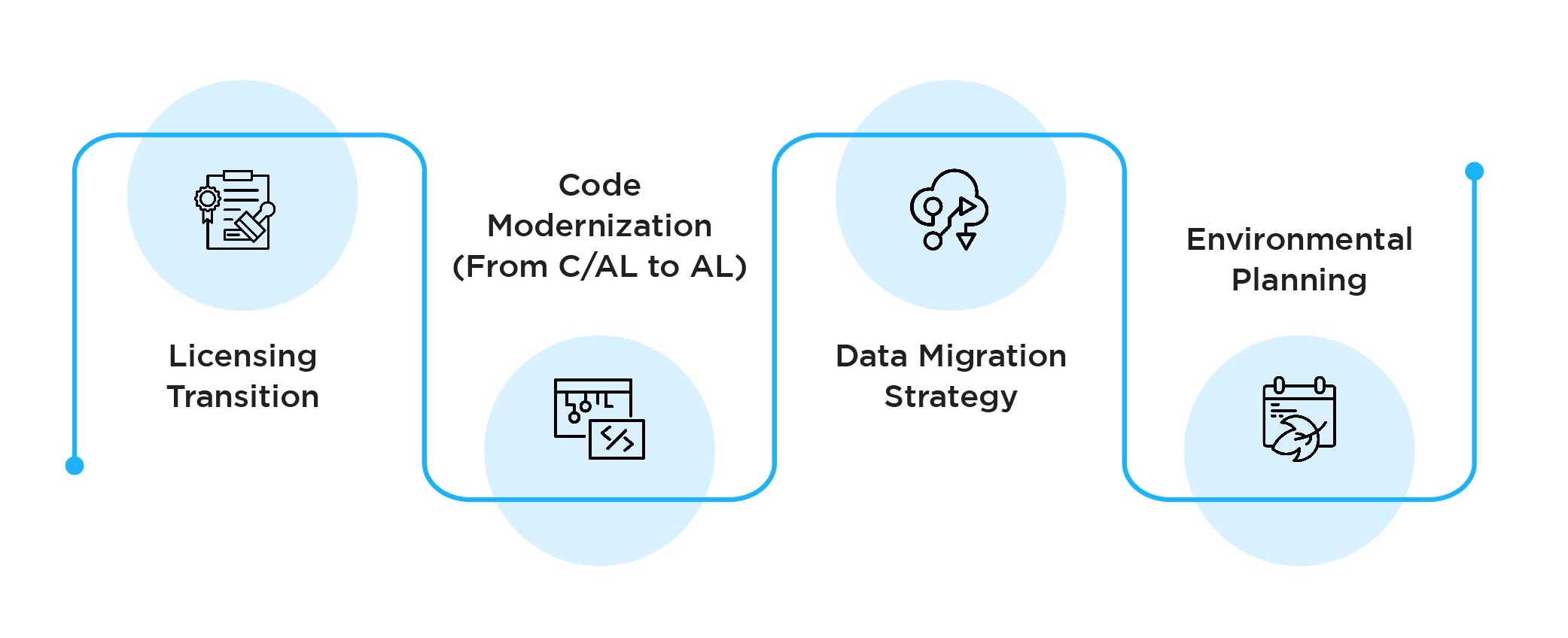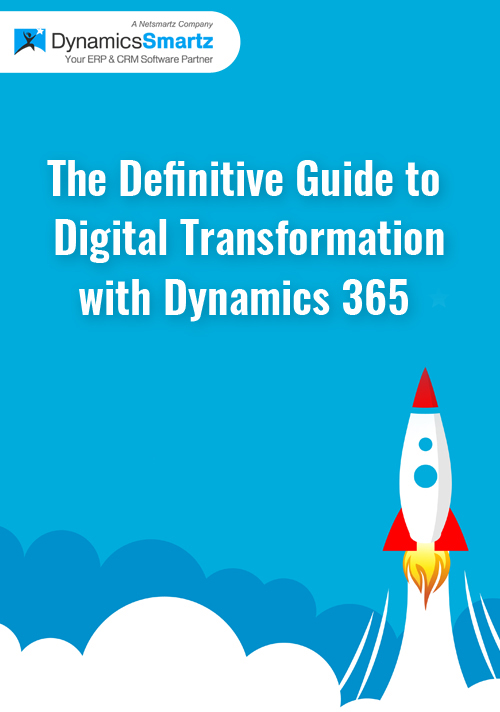Blog
How Existing Customers Can Upgrade from Microsoft NAV to Dynamics 365 Business Central in 2025
Written by
Vinay Punjabi / ![]() August 14, 2025
August 14, 2025

As we move deeper into the AI-driven era of digital transformation, the pressure on businesses to modernize their legacy systems has never been greater. For thousands of companies still running Microsoft Dynamics NAV, 2025 is a critical juncture.
Microsoft officially ended mainstream support for NAV years ago, and while many businesses have continued using it under extended support, the reality is clear — it’s time to move forward. The natural upgrade path? Microsoft Dynamics 365 Business Central.
Business Central is no longer the “new kid on the block.” As of 2025, it’s a mature, AI-empowered ERP solution used by over 30,000 organizations globally and is especially gaining traction in cloud-first markets like the UAE and Dubai, where digital adoption is booming.
Whether you’re in finance, construction, retail, or manufacturing, upgrading to Business Central today means embracing scalability, resilience, and future-readiness. But what does the upgrade path look like, and how can existing customers prepare? Let’s dive in.
From NAV to Business Central: The Strategic Leap in 2025
While Dynamics NAV once set the benchmark for mid-market ERP, it was never designed for today’s cloud-first, AI-native world. Business Central, by contrast, is a modular, extensible, and AI-enhanced ERP that delivers:
- Full cloud scalability with zero infrastructure overhead
- Monthly, auto-managed updates (no downtime)
- Embedded AI & Copilot to automate processes and accelerate decisions
- Native Power Platform integration (Power BI, Power Automate, Power Apps)
- Superior data security and local compliance (e.g., UAE ESR, VAT)
Key Differences and Advancements
| Capability | Dynamics NAV | Business Central (2025) |
| Deployment | On-prem / hosted | SaaS, On-prem, Hybrid (Azure) |
| Development Language | C/AL (.fob) | AL Extensions (.app) |
| Interface | Windows client | Web-first + Mobile native |
| Updates | Manual | Monthly, auto-deployed |
| AI/ML | None | Built-in Copilot + predictive analytics |
| Integrations | Limited | Seamless with Microsoft 365, Teams, Azure |
| Customization | Invasive, hard to maintain | Modular, upgrade-safe extensions |
✅ AI-powered insights: Copilot in Business Central provides intelligent recommendations, email summarizations, forecast suggestions, and more, streamlining operations at every level.
✅ Better compliance: Whether it’s GDPR in Europe or ESR and VAT in the UAE, Business Central helps you stay compliant with localized and global financial regulations.
✅ Anywhere access: In a post-COVID world where remote and hybrid work is here to stay, Business Central’s mobile-first approach allows users to work securely from any device.
Why Businesses in Dubai & UAE Can’t Delay the Upgrade
As governments across the Middle East double down on national digital transformation roadmaps, the cost of staying on legacy ERP is rising fast.
Key Triggers in 2025:
- End of mainstream support for most NAV versions
- UAE’s Digital Economy Strategy targets 20% GDP contribution by digital sectors by 2031 — legacy ERPs don’t fit that future
- Data sovereignty and VAT compliance now mandate cloud-native or localized solutions
- AI-readiness is a business differentiator — and NAV simply isn’t built for it
🔐 Microsoft Azure UAE (North and Central) ensures full regulatory compliance for BC deployments in Dubai and across the GCC.
Read more: Benefits of Upgrading from Dynamics NAV to Business Central
The Business Central Upgrade Roadmap: What to Expect

Upgrading from NAV to Business Central isn’t a simple version of hook; it’s a structured digital transformation.
1. Licensing Transition
If your Business Ready Enhancement Plan (BREP) is active:
- You qualify for a 3:1 license credit (1 NAV license = 3 Business Central cloud users)
- You avoid paying the full license price like a new customer
- Expired BREP? Renew before initiating the transition to avoid additional costs
2. Code Modernization (From C/AL to AL)
NAV customizations in .fob must be reengineered into AL extensions. This is a chance to clean house and modernize:
- Use Text2AL converter tools
- Migrate business logic as modular extensions, which are easier to maintain
- Eliminate old .NET interop layers — not supported in SaaS
- For Azure deployments, .NET integration may be retained under on-prem configurations
💡 Extensions make your ERP upgrade-safe — no more “breaking the system” with every update.
3. Data Migration Strategy
Depending on your data volumes, use:
- Configuration Packages (RapidStart) for master data
- APIs or Web Services for high-volume transactional data
- Advanced ETL tools (e.g., KingswaySoft, Azure Data Factory) for complex loads
⚠️ Be sure to map custom fields correctly to avoid integrity loss during migration.
4. Environmental Planning
| Scenario | Recommendation |
| Standard features + low customizations | Cloud (SaaS) |
| On-prem hardware dependency | Business Central On-Prem (Azure) |
| Data residency in UAE | Azure UAE North or Central |
| Complex integrations | Hybrid (BC SaaS + on-prem connectors) |
NAV Upgrade UAE & Dubai: Regional Considerations in 2025
Markets like the UAE and Dubai are experiencing explosive growth in cloud adoption. With government-backed initiatives like the UAE’s “Digital Economy Strategy,” it’s the right time for NAV users in the region to upgrade.
- Localized VAT support
- Arabic language packs
- Hosted in UAE-compliant data centers (via Azure UAE North & Central)
- Strong partner ecosystem for implementation and support
Looking for a NAV Upgrade Partner in Dubai or the UAE? Partnering with a regionally experienced Microsoft partner ensures data residency compliance and quicker deployment.
NAV Upgrade Timelines: How Long Does It Take in 2025?
| NAV Version | Estimated Upgrade Time |
| NAV 2018 | 3–5 months |
| NAV 2016 or earlier | 6–9 months (requires an interim step) |
| Highly customized NAV | 9–12 months (with code refactor & testing) |
Your timeline depends heavily on:
- Number of customizations
- Volume of historical data
- Integration complexity
- Internal change readiness
Read more: How to Proceed to Upgrade Older Versions of Dynamics NAV to the Latest One
Top Tips for a Successful Business Central Upgrade

- Assess your NAV version: Earlier versions (NAV 2009 or older) may need an intermediate upgrade to NAV 2018 before transitioning to BC.
- Audit your customizations: Avoid carrying over outdated workflows.
- Plan for change management: Train teams early on new UI and cloud concepts.
- Engage a trusted partner: The right Business Central Upgrade Partner brings strategic value, not just technical capability.
Real-World Success: A NAV Upgrade in Action
A Dubai-based construction firm upgraded from NAV 2016 to Business Central SaaS in Q1 2025. The result? A 28% reduction in manual finance entries, 3X faster reporting cycles, and improved project visibility using embedded Power BI and Microsoft Copilot.
Conclusion: Your NAV System is Holding You Back
Microsoft Dynamics NAV was the gold standard in its time, but its time has passed. In 2025, an NAV upgrade to Business Central isn’t just about keeping software up to date — it’s about staying relevant, secure, and competitive.
Whether you’re in Dubai, Abu Dhabi, Sharjah, or anywhere in the UAE, DynamicsSmartz can help you architect a smart, scalable, AI-ready ERP future with Business Central Upgrade expertise you can trust.
🎯 The longer you wait, the more complex (and costly) your upgrade becomes.
Let’s Get You Future-Ready
As a Microsoft Solutions Partner and trusted NAV Upgrade Partner, we’re here to guide you every step of the way.
📩 Contact DynamicsSmartz today to get a tailored NAV-to-BC upgrade plan for your business
Categories
- United Arab Emirates
- Microsoft Dynamics 365 Finance and Operations
- Finance and Operations
- Dynamics 365
- Construction365
Recent Posts
- Creating Custom Security Roles in Dynamics 365 Finance and Operations for the UAE
- Your Step-by-Step Guide to Enabling Copilot in Microsoft Dynamics 365 Finance and Operations
- The Growing Need for ERP in UAE’s Construction Industry
- Top Features of Microsoft Dynamics 365 Finance and Operations UAE Enterprises Can’t Ignore
- Cutting Costs, Improving Control: How D365 F&O Empowers Dynamics 365 for Construction Firms in the UAE








